The relationship between keywords and search queries is the foundation of Google Ads paid search marketing and organic SEO campaigns. We hope this 5,000 word keyword targeting guide will help startups and business owners have a better understanding of how you can combine PPC and organic search engine optimization strategies to create content and ads for both informational and transactional terms in order to maximize traffic, conversions and marketing channels. Because this is a lengthy guide, we have created a table of contents to give our user’s the ability to jump ahead to certain sections of interest. Happy reading.
Keyword Research Guide Table of Contents
- Getting Started with Keyword Research
- Aligning Keywords with your Business Goals
- Managing Keywords and Ad groups
- Google’s Keyword Planner Flaws
- Managing Keyword Match Types
- Looking for New Targeting Opportunities
- Expanding the Reach of Existing Keywords
- Adding Negative Keywords
- Use PPC Keyword Research for Organic SEO
- Conclusion
Keyword Research Targeting Guide for PPC and SEO Campaigns
Keyword research is a crucial starting point of any natural SEO campaign in order to discover the actual words and language people are using when they search for a particular topic or subject related to your brand’s offerings. You must also research how competitive (competitor’s domain authority, inbound links, etc.) it will be to rank on the first page for a keyword phrase, so that you can measure or estimate the costs and ROI of running an organic SEO marketing campaign.
Keywords are also used to connect your PPC ads with prospective customers and their searches. Effective keyword management helps you reach the right potential customers to grow your business. Understanding search intent with regard to the buyer’s journey can help to effectively align organic and paid search strategies.

Keyword research is a part of “market research“ in the 21st century
We now live in a mobile first, digital economy where we are constantly connected. The devices vary: a laptop at work, a smartphone while commuting, an iPad, or even a smart watch while sitting on the couch. People search for a variety of things, any time of day, for different purposes: research, shopping, entertainment. Search engines must be able to answer many types of queries, such as navigational queries, informational queries and transactional queries.
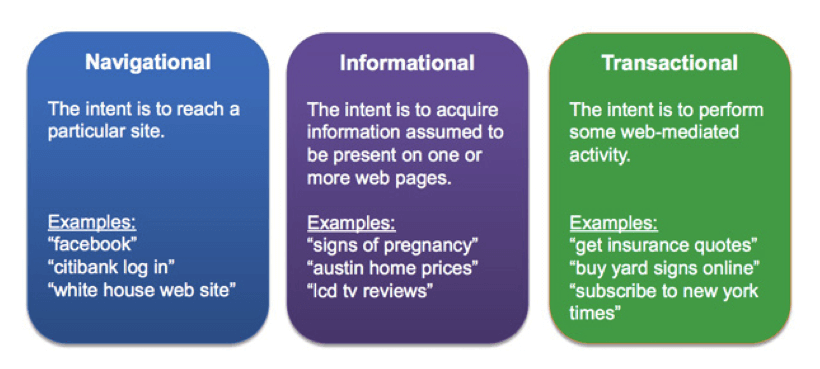
And as consumers search for things on Google (the most used search engine), advertisers specifically like to target commercial intent searches, or queries, using keywords. Search is also adapting to become a more human experience:
- The language of search is changing – with all the voice and virtual assistant technologies available, it has evolved to be more conversational. It’s not just about punching keywords in to find basic info, users are now interacting with their devices more naturally, sometimes asking questions such as, “Siri what is the best Italian restaurant in Soho?”
- Search is now literally everywhere – the plethora of smart gadgets on the market makes search so much more intertwined and common in our everyday lives. This is bridging the gap between the digital world and our real human experiences.
- Search is very personal – The mass amounts of data feeding into Google, Facebook and Bing combined with advances in machine learning makes these search engines more intelligent platforms to better understand intent behind a query. This makes people’s search experience more personal and relevant.
Our keyword discovery process involves a deep-dive exploration of the landscape and will investigate:
- Short-tail or head keyword search queries
- Mid and long-tail keywords
- Associated search demand
- Competition levels
- Relevancy
Before we get into using the Adwords Keyword planner tool and showing you how to manage your PPC campaigns more efficiently, we should probably explain the keyword categories first.
Keywords can be divided into a few categories: Head keywords and long tail keywords.
Head Keywords: usually a single word that has a ton of competition and search volume. Take the word “insurance” as an example. The person’s search intent is not very clear with this. Are they looking for a car insurance quote, health insurance info, or a definition of the word.
Long Tail Keywords: are phrases that generally have at least 3 to 5 words in the search query. A long tail phrase could be something like “Restaurant accounting in New York City” or “get a health insurance quote in NY” These phrases may get less searches, but the intent is much clearer and more likely to convert.
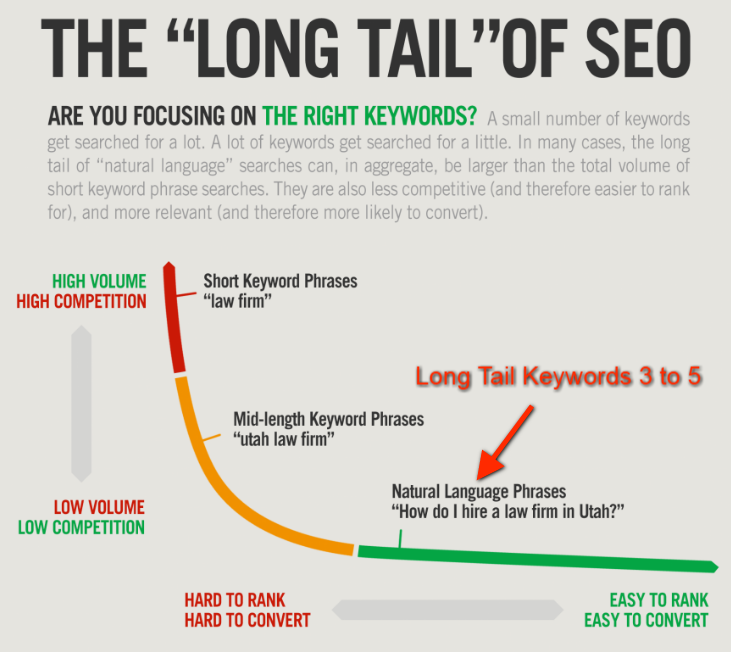
In general, we recommend that startups and small businesses should target lower competition long tail keyword phrases that have a decent amount of search volume or popularity. Why go after long tail keywords?
- They will be easier to rank for organically
- Conversions can be made more easily
- They will be cheaper to bid on in PPC
- There is lower risk and investment
You want to Align Keywords with your Business Goals
For most marketers and business owners Google Adwords accounts are driven by picking and bidding on keywords to target in ads. There are a number of third party tools available, and, regardless of research tools you use, it’s important to think holistically about the ways that your potential customers could find you.
Why: the keywords you choose should reflect all of the different types of “user search queries” that could help people find your landing page when they are searching for something you offer or sell.
The questions that we ask potential client’s during this research process may include:
- Where do discovered keywords fit into the user’s buying cycle journey?
- Are they of high, medium or low intent?
- Are they likely to play a converting role, or should they be seen as assisting keywords?
- How can they be matched to different stages of the marketing funnel?
- How well are competitors targeting these keywords?
- Are there opportunities for SEO keyword trends to influence potential paid search campaign activity, and vice-versa?
Here are a few sources to analyze when you’re figuring out what keywords would provide the best return on investment:
- Your Website – you should constantly monitor your site’s offerings and webpages. Try to find any gaps between your current keyword list and your site’s content.
- Your Products and Services – Make sure you are bidding on all your company’s core products and services. When your potential customer is near the end of their buying cycle (after conducting informational searches), then they will be searching to purchase a specific service or product. As an example, say you are a consumer electronics e-Commerce site, specific models or product brand names such as “Trüsound T2 Wireless Bluetooth Speaker” can be high converting keywords.
- Your Brand – Do not underestimate the value of your branded terms. If your company sells multiple products, make sure you remember to add keywords as a combination of your brand’s name with popular high search volume products that people often search for in the same query. Such as “Silver Palms Luxury RV resorts”

Tip: Some people may search for a Brand’s URL on Google if they only recall the name and not the exact website, so remember to include your Brand URLs as keywords in your PPC ad group.
- Examine the Research Process of your Customer – Put yourself in your potential customer’s shoes. What are all the ways and questions they might search to find what you offer? The sales process for an online retailer who sells shoes will be quite different than a commercial building contractor bidding on $500,000 renovation contracts. For your particular business, you need to make a map or funnel of the buyers process and make sure your company has a presence at each step. For each stage, you will want to ask your team the following questions:
- How will potential customers find me at this stage?
- What kind of information or content do I need to provide to move them along to the next stage?
- How will I know or track if they have moved closer to converting?

For the PPC strategy: you should try to find words with commercial intent, these keywords usually show “desperation” or an “act now mindset” from the searcher. A common example would include search phrases with “buy” or “for sale” in them.
- Conduct Competitor Research – you can use software like SEMrush or Spyfu to look at what other competitors are bidding on and getting traffic from. There may be some words that you did not think of that you could include in your keyword list. You may also use Google Adwords auction insights reports, which lets you analyze and compare the performance of your competitors who are bidding on the same keyword auctions as you. This tool is useful for both search and shopping campaigns, and shows 6 statistics including impression share, average position, overlap rate, position above rate, top of page rate, and outranking share. You can use this information to make better budgeting and bidding decisions. You also can look at everything your competitor is doing online to see how they describe their products.
- Leverage Google’s “Related Searches” – you can head over to Google and start to type in searches for each of the individual phrases you started to come up with so far, that are related to your business. Then, scroll down to the bottom of the page, where you will see Google lists 8 other phrases that are popular and related to the phrase you just searched. If any of these are relevant to your business, then add them to the list. We used this tool for a jet charter client of ours to find related longer tail keyword ideas such as “Private jet charter”, “jet charter prices” and “jet charter rates.”
- Use Google Trends to find a Keyword’s Popularity – Google Trends is another tool built by Google that’s both useful and serves a different purpose than Google’s Adwords Keyword planner tool. Google Trends gives you visual, multidimensional insights into the popularity of a keyword. Each keyword is broken down into sections such as seasonality, media coverage, and geographical location. It also gives you the history of a keyword’s popularity from 2004 to today. You can even compare up to 5 keywords at a time. Another cool feature is the stats around current trending phrases.Bruce Clay wrote a useful post on the 10 reasons you should use Google Trends for more than just keyword research. Most keyword research tools show you two numbers: competitiveness of a keyword and the search volume. Trends can show another perspective into a keyword’s recent shift in popularity. We used it when we conducted keyword research for a Coworking space client to see what phrases we were going to use in a content marketing/SEO campaign.

Tip: Try to avoid bidding on terms that include qualifiers like “discounted” or “free” unless your product or service actually offers free trials or discounts, so that your landing page meets your ad copy and the user’s expectations.
Manage your Keywords and ad groups with your overall business Goals
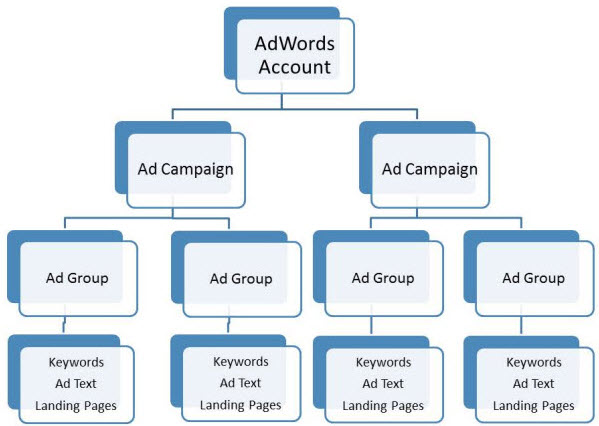
Proper PPC management includes organizing your keywords into well defined ad groups. Ad groups should be structured and have clear goals within the sales funnel stage. Different keyword phrases have different purposes and search intent, (informational, commercial, transactional).
Each ad group should contain keywords and ads designed to target a customer’s search intent. This could equate to targeting different stages in of your customer’s journey. The journey typically begins with early research (informational intent) to purchase (transactional intent).
You may also group your keywords by different products, geography, or brands. For better “budgetary control”, keywords are usually grouped at the ad group level. If you are a small business with a limited budget, your account should be set up to maximize the number of clicks and conversions from your most important (transactional intent) ad groups.
The Accuracy of Google Keyword Planner Numbers
Google is constantly updating their algorithm hundreds of times per year to get better at understanding user intent and showing the best results. If you know why a user is looking up a certain keyword, you will be able to determine what keywords you want to use in your content.
The Google Keyword Planner is probably the most used keyword research tool, yet it has a few flaws that provide inaccurate information for keyword metrics. According to a Moz article, the keyword planner data metrics give averages for “Average Monthly Search Volume” that are heavily rounded.
“Google’s keyword tool can routinely hide 50 percent or more of the keyword phrases. Even if you enter in a list of keywords for the purpose of acquiring search volume data, Google will not return the data for some of the keywords.” Andrew Broadbent Director of Search Marketing.
As an example, what do you think of when you hear the word “basketball”?
You may not even be a huge fan of it, but here are a few phrases that may come to mind.

When you type in the word “basketball” into the Adwords keyword planner, Google only suggests 1 of these related terms.
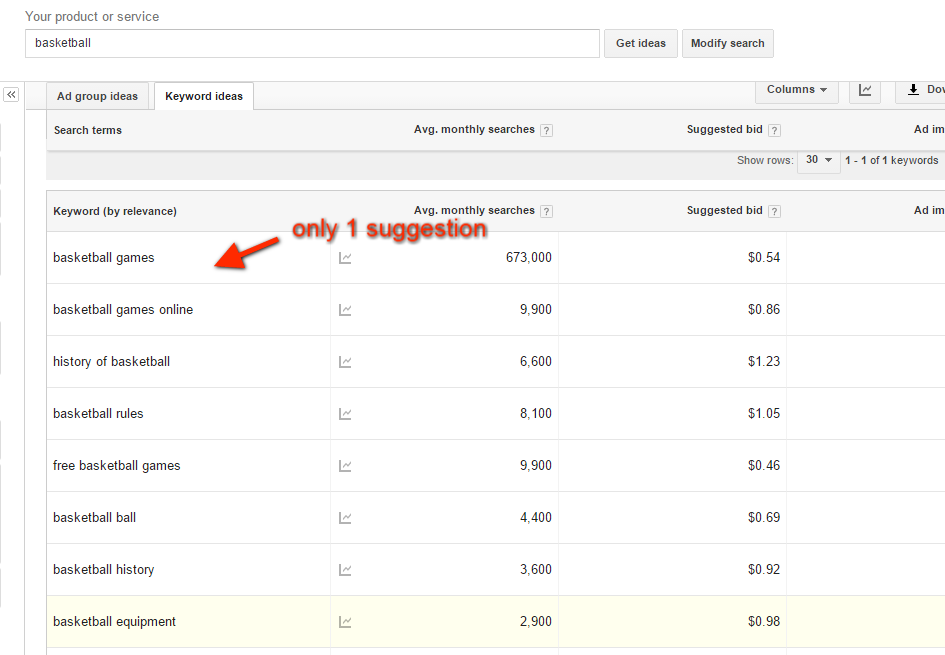
But when I go and search it online as a regular person would, they do give many of these suggestions.
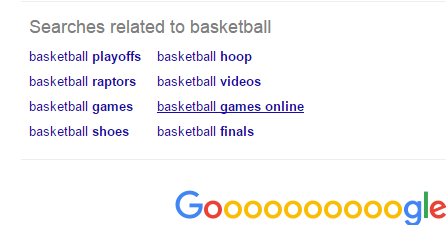
So why would Google not show or suggest the same words that they show in their search engines results pages (SERP)? These inaccuracies in the Keyword planner’s results could be impacting your Adword campaigns by not accounting for those keywords.
“It is advised that you enter the keywords one by one to force Google to give you the true search volume. Business owners can use this to their advantage by finding the keywords Google hides, as they may have lower Cost Per Click (CPC)’s since most advertisers won’t be able to find them,” Said Mr Broadbent.
You can also use other keyword tools such as Serps, SEMrush or Moz Keyword Explorer to build lists of keywords for a brand, then you can use the Adwords keyword planner to find the search volumes.
Pause your low search volume keywords
Pay attention to low search volume keywords. These are unpopular terms that people don’t use much and they do not drive impressions. Clean up the clutter in your list by pausing them, especially if you are bidding on similar keyword phrases. It’s not recommended that you delete them, as you will lose this data, and it’s better to have data as to why something is not working, than no data.
Manage different keyword match types for control and growth
Broad match is useful for bidding on long tail keyword phrases, while using exact match for your primary product or service may help you drive more targeted traffic. In Google Ads, your keywords are there to target users’ search queries. By using the different match types, you are given some control in terms of targeting logic or context of those keywords. You cannot have a proper PPC strategy without having a comprehensive understanding of match types and their role for different phrases.
1 Understanding the differences between semantic vs syntactic
It’s very important to understand that the main differences across Google’s keyword match types is the intent or meaning of the user’s search (semantic search), compared to the position or order of the words and the close variations of specific keywords in that search phrase (syntactic search)

Google Ads Broad Match tool uses Google’s algorithms and the long history of search data to decipher the context and meaning of a query to answer a question (semantically), while the other match types (phrase match, exact match) look for and take into account the words and the order of which users type them in, not deciphering the intention behind the user’s search (syntactic). According to Google, “15% of queries each day on Google haven’t been searched before”, so using broad match gives you the best opportunity to capture anything that is semantically related to your keywords. When you are managing your account, think about utilizing keywords to match this behavior.
Broad match modifier (example)
Under the Adwords Broad match tool, there is also something called the broad match modifier. Ads, may show on searches that contain the modified term by adding a + sign to it (or close variations, but not synonyms), in any order.
- Symbol: +keyword
- Example keyword: +women’s +hats
- Example search: hats for women

Tip: The broad match tool is designed to find and capture a wide variety search queries based on the user intent, while the phrase match and exact match types should be deployed (with varying levels of control) to target actual search queries that you know have a high volume (or are popular).
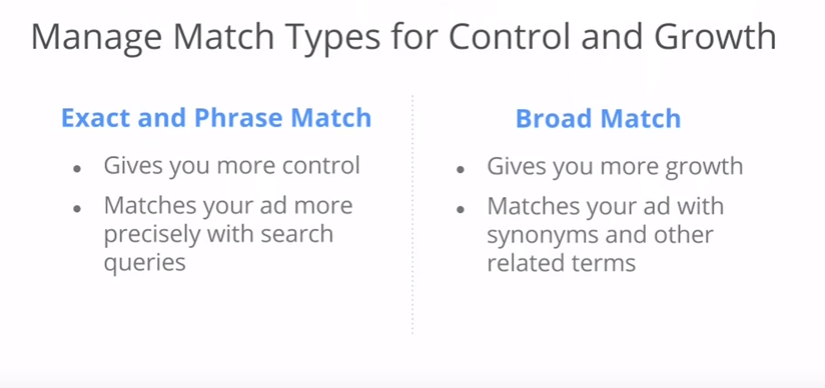
- Avoid creating a lot of minute variations of exact/phrase match keywords
You want to refine match types for the high value keyword search phrases. You can have a lot more control over “bidding” and “creative” if you target search queries with more specific match types, although keep in mind that targeting via exact and phrase match, should not be the supreme strategy across your entire Google Ads account. Try not to over-complicate managing your account, and possibly missing out on valuable traffic from broad match search terms.

Tip: You will want to focus syntactic match types for high volume “transactional” intent queries, where you will reap the benefits of a greater control of bids and creatives.
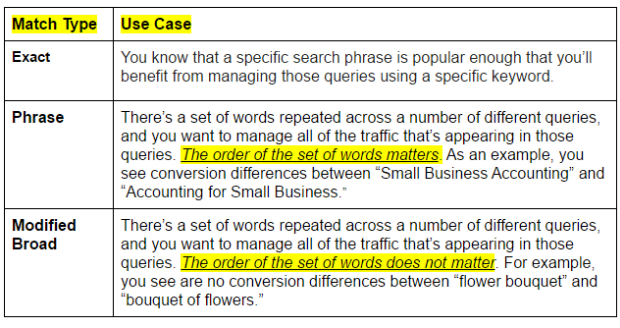
Depending on the size of your Ads account and monthly budget, it’s smart to look within keyword phrases where there is enough search query volume to justify creating a separate syntactic match type keyword. How do you do this? Login and view your search term report, which you can either filter by click or conversion activity. Getting specific with creatives will require you to put these keywords into a new or separate ad grouping so you can tailor the ad copy messaging.
You do not have to waste a lot time building tons of minute variations of your exact match and phrase match keywords. Exact and Phrase match already expand to cover close keyword variations. While synonyms are excluded, singulars/plurals, misspellings, acronyms, abbreviations, accents and stemming are all included in the matching behavior of your keyword

Tip: It is important to establish a baseline of how different match types convert and perform in your account. This is helpful for setting new bids on new keywords in the manual bidding option. After they are set up, manage them based on performance.
3. Expand Match types for High Value Keywords Search Phrases
Going from broad to exact gives you the control to better manage traffic for the high value keyword terms. You should consider sorting your exact/phrase keywords based on clicks, conversions and assisted conversion volume. As you expand your reach, you’ll want to maximize your account’s costs and performance. You can do this adding negative keywords and by also enabling bid automation for your broad match search terms.
Look for new targeting opportunities
- Use Dynamic Search Ads To Streamline Account Management
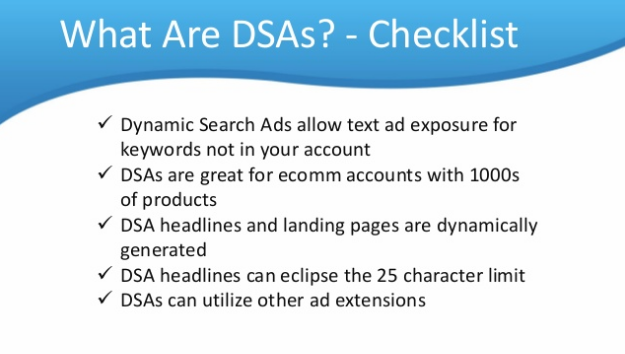
In Ads, you can use Dynamic search ads to grow your business by expanding your targeting. There are a few ways to do this, by using Dynamic search ads and automated tools.
Dynamic Search Ads (DSA) provide an automated option to marketers for targeting. The benefits are time saving while also delivering a smart option for expanding reach. If your company is thinking about launching new products, or into new markets, countries, DSA allows you the ability to test things without the need of building a full campaign.
Dynamic Search Ads automatically target keyword phrases and generate headlines based on the content of your website, which then delivers users to the appropriate landing page for each search query. The Google Ads team just announced they will be rolling changes to the DSA campaigns to improve the ad relevance on these queries.
As an example, ads that point to a landing page about iced coffee makers will be less likely to show for less relevant searches like “iced coffee.” – Google
This can be used to run alongside (and does not require any changes to) existing keyword campaigns that are already live.
You can use Google’s Keyword Planner tool to give you options for a number of different expansion options. Just specify the product or service, landing page or website or your businesses product category to get a list of keyword suggestions.
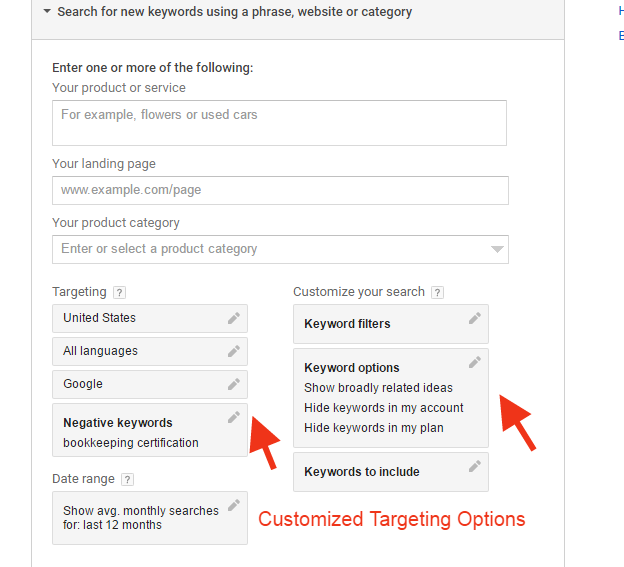
You can customize your targeting options to get the best possible keyword search volume estimates for your new keywords. Check out how PPC Hero used dynamic keyword insertion helped increase impression share By 36% for a client.

Tip: The Adwords opportunities tab is another way to look for new ways of expanding your targeting. You can look for new keywords or keywords that could have an expanded volume by broadening the match type. The opportunities tab looks at your acct’s performance history, campaign settings, and Google’s search volume trends and automatically suggests and generates ideas that could improve performance. Use it to improve bids and budgets as well.
Expand the reach of existing keywords
- You can maximize the search presence of your keywords by increasing your Ad Rank
As a general rule in GoogleAds, you can make your ads be seen by more people that search for keywords related to them by increasing your Ad Rank. You want to improve your Ad Rank of your keywords because it will make them more competitive in the auctions and increase the volume of impressions.
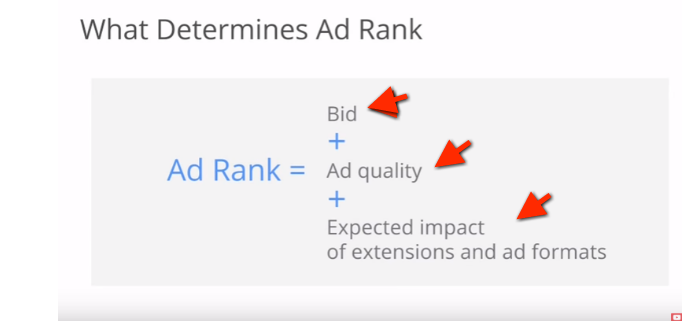
3 ways to increase Ad Rank in Google Ads:
- Increasing the quality of ads (ad copy and landing pages)
- Increasing Bids
- By enabling or improving your ad extensions
If your company has the budget, then one way to get additional traffic is by increasing your bids for the keywords you want ads to show up for. There are some tradeoffs, while your efficiency may go down, you should see the reach of your performing keyword ads go up.
The Adwords bid simulator can help to give you an estimate on how an increased bid could help to increase the number of impressions that your keyword could be displayed or appear to users.
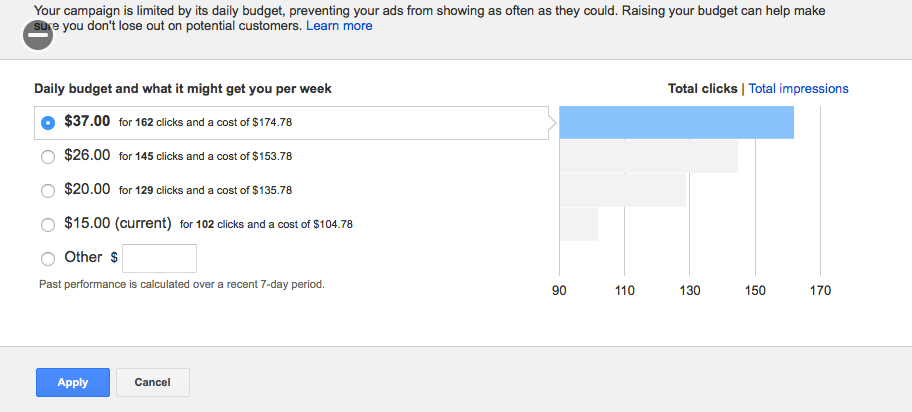
You also can can use the keyword planner to show you more specifics about the traffic you could potentially get from increasing the impression share. Just paste your keywords into the planner, and filter your results by average monthly searches and ad impression share. This will show you the keywords with which you should bid more aggressively. Make sure these keywords make sense for your business.

2. Expand your reach to users beyond Google.com by targeting search partners
You can choose to target Google’s search partner sites (sites that partner with Google to show ads) in your Google Adsaccount at the campaign level. You can view the performance metrics by segmenting your reports with “Networks (with Search Partners).”
The search partners provide a different avenues for your keywords to reach new audiences, and when managed right can reduce Cost Per Clicks (CPCs) and lower Cost Per Acquisitions (CPAs). More importantly, using the search partners networks allows you to open up to new customers that may not be on Google.
Adding negative keywords should be a regular maintenance activity
Using negative keywords is an important component of a well rounded PPC marketing keyword strategy. You don’t want to lose money by allowing your ads to get triggered by keywords that are not relevant to what your business is offering. By using them, you can increase profitability and control the flow of traffic. You will want to use the Adwords search term report or the Keyword planner to find important negative ones.
Adding the Negative Keywords
Negative keywords help you hide ads from people who are not exactly looking for or are interested in the products or services you are offering–even though their searches may be syntactically related to keywords in your campaign.
Find negative keywords by looking at the search terms that are coming in for the campaign. You can find this under the keywords tab. Look for search terms that don’t make sense for your product offering. Another way to find unrelated keywords is by going through Reports and look through the search terms. This will give you information as to which keywords are not producing clicks or conversions.
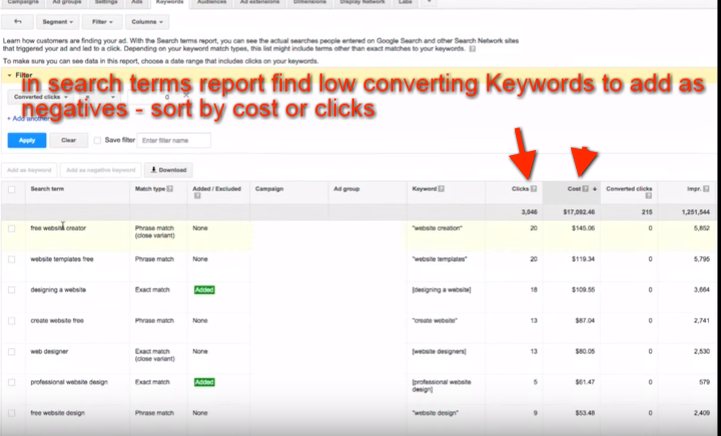
You will want to look for terms that don’t fit your business model among the queries that you are targeting. You also want to look into the intent behind a search. When looking for negatives, do not worry too much about adding ones that are likely to match your current keywords, a lack of relevance will usually prevent Google from showing you ads on those search phrases.

Tip: Look for trends of keywords that do not align with your business model. As an example, a high end luxury clothing retailer may exclude phrases that contain “discount” or “cheap.” Again, it’s all about the meaning behind the search, so be careful of using one word negatives. Someone could be searching for “free” shipping with your product, which is very different than looking for a free product.
- Negative keyword Match types
Just as you use match types when bidding on keywords, you can also use match types with negative keyphrases: broad, exact and phrase.
- Negative Broad Match – will not exclude keyword phrases that are close variations or synonyms of the negative keyword. It will only exclude keywords that include “all words with a keyword,” and the order of the words appearing does not matter.
- Negative Phrase & Exact Match – queries of close variation won’t be excluded in phrase and exact match. Because of this matching behavior, it is advised that you add poorly performing keyword phrases that would be considered close variations of positive keywords explicitly as their own negative keywords.
Managing Negative keywords more Efficiently
To manage negative keywords that will save your account the most money, you will want to look for recurring trends in queries that are not showing a strong return on investment or conversion. Particularly, if you have a large PPC account, do not waste tons of time reading thru every query that triggered an ad. Instead, look for negative words that are occurring often. You can create a negative keyword list in a shared library, if you find keywords that will never be useful to your company’s branding or business goals. Simply add negative keywords to a list and exclude across all campaigns.
Use & Align PPC Keyword Research with Organic Search Campaigns
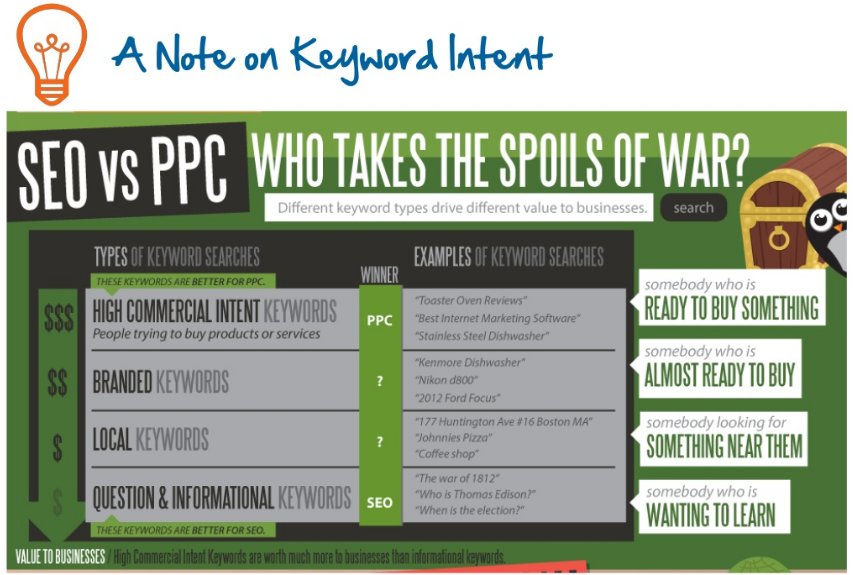
Brands should act on keyword research according to keyword intent, using both Pay Per Click (PPC) and SEO to win at different types of searches. As an example, a local search query such as “homes for sale walnut creek” may help to add to the search engine’s understanding of the user’s intent, and the stronger the “commercial element” is, the stronger the intent to purchase is indicated. This an important signal that Google uses to choose whether or not to show ads for the given query.
Most of this keyword research guide has been focused on Adwords PPC research and management of keywords. Most brands use PPC to target the commercial intent phrases to convert people at the very end of the buying cycle on a landing page. You can use PPC to see what words convert best for your brand. Depending on your success, you may use the keywords with the most impressions in your organic search optimization strategy.
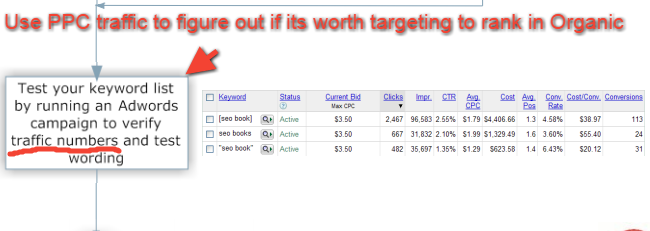
Google and other search engines have transitioned from needing an exact match between the keyword terms in the query and also in the link anchor text, so as not to exclude equally relevant web page results that may not actually contain all of the keyword terms. Search engines are ranking pages for a given query and including links that are relevant and semantically related to the topic. So by understanding the “intent” or “context” behind a keyword or phrase, a search engine can actually expand the initial query. Search engines use query expansion techniques, usually based on an analysis of the word or term co-occurrence.
“What this means is that semantically similar queries can be found by grouping them based on relevant documents that have a common theme, rather than (as already mentioned) the words used in the query.” – Mike Grehan, Managing Director at Acronym Media
Therefore, one should look at creating content that covers a general topic, and includes partial matches or synonyms of the keyword you are trying to target. In other words, as we live in Google’s Humming bird algorithm world, try to use semantic keywords as much as possible (synonyms, close-variants and tangentially-related phrases). For example, if you search for the term “guest posting” you will see that Google is ranking a page 1st that has “guest blogging” in the title.
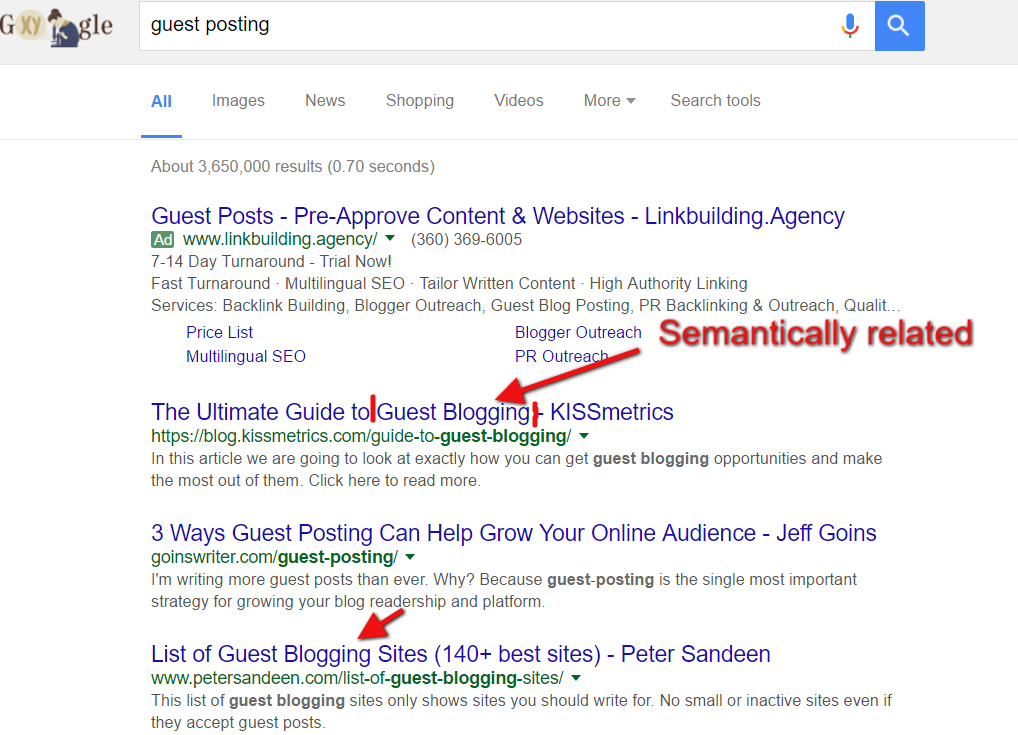
If your product or service is either expensive or complicated to understand, your potential customer may need to research things before they feel confident in making a purchase. You must figure out your customer’s path to purchase or the buyer’s journey, before you can show up with the right content in each phase. You can create content to target keyword phrases that are (informational searches) in the research or consideration funnel stage.
Ross Hudgens of Siege Media gives a good example, say you were an eCommerce site that sells outdoor sports equipment and someone was thinking about buying a snowboard. Before that person spends hundreds of dollars, they will probably want to know what size makes sense for their weight and height. So, it’s logical that someone would search for “snowboard sizing” or “snowboard sizing chart.” Now, although these searches have not directly shown a “commercial intent,” they are on the path to purchase. If you were an eCommerce retailer that sells snowboards and other related accessories, it would be beneficial to create useful content that educates the research in that part of the buying decision.
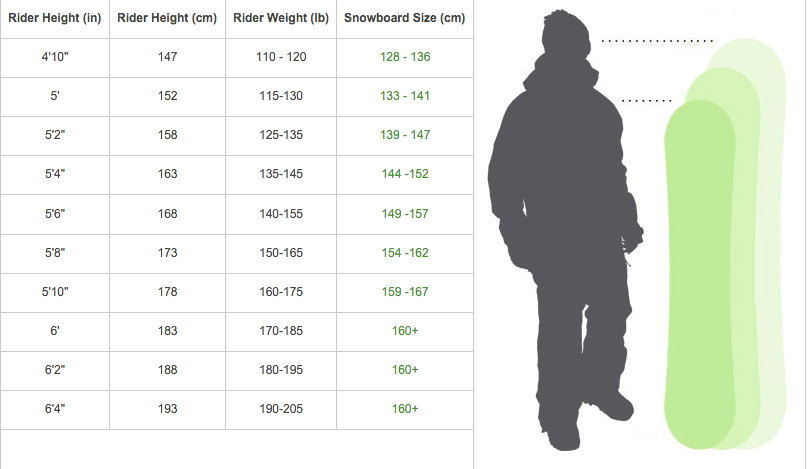
For instance, eCommerce company, Evo has done a good job creating an extensive guide that ranks for pretty much every keyword related to this topic. In addition to having created content to target phases within the marketing purchase funnel, the guide is layered on top of their “buy a snowboard” landing page. When people search “snowboards”, they are more likely to notice Evo’s page due to the brand awareness generated from searching snowboard sizing.
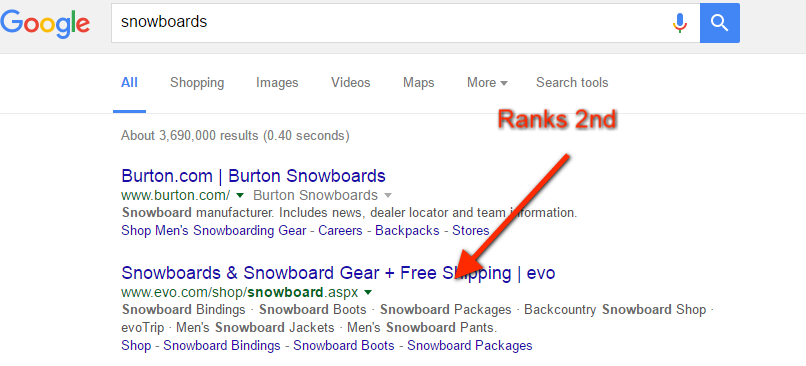
You can use the Semrush tool to figure out and examine the monthly searches, like in Evo’s case. Can you imagine ranking for the “snowboard sizing page” which brings in 8,100 monthly searches? This page helps them to rank # 2 for “snowboards” which brings in 38,000 monthly searches. You can then apply these strategies to other products and companies. This Semrush tool also gives rank results, average cost per click, number of competing pages, related keywords, and even the brands that are currently buying space for a particular keyword.
What Does the Keyword Targeting Evaluation Process
for Organic SEO Look Like?
So what is the process for figuring out the competitiveness of ranking for a particular phrase on the first page? If you create content that is better than what is currently ranked, will your domain have the authority to break into the top 10 results? You can use a variety of tools to get a macro analysis of an organic SERP, such as Term Explorer or the Moz Keyword Difficulty tool. Here is a screenshot of the Moz Keyword Ranking report analyzing the competitiveness of the search phrase “CFO Consulting San Diego.” This report does not tell you everything, but it does give a snapshot into the top 10 results and gives the following metrics: Domain Authority, Page Authority and the number of root domains linking to this page and the website.
Nick Eubanks wrote a pretty thorough guide on this process. You should establish a baseline based on the authority of your domain, how good your content is going to be, and also where your content fits in the conversion funnel. Next, you need to determine if your website’s domain authority is strong enough. If you create a content page will it rank for a phrase without a link building campaign? Or will you need to do some promotional outreach to build more authority to your content piece? To rank for competitive terms you will most likely need a link building strategy.
Once you figure out a strategy to rank for targeted keyword phrases, it becomes not only just about rankings or even traffic, conversions are what most companies are looking to measure as a KPI.
- Keyword volume: If we rank for a popular keyword with a ton of volume, that obviously translates into a ton of page views.
- Promotion: How hard did we push it through other channels aside from organic (such as email or social or PPC)?
- Clickability: A great headline, a great share image, truly insightful analysis … this stuff makes a big difference too, and without it we wouldn’t be ranked in the first place
However, when it comes measuring which landing page or post drove the most direct conversions, that’s all about: tying together and matching the searcher’s clear intent to something your brand offers.
Conclusion
It seems to be, things are moving to more of a “Pay to play” search results environment. Google has drastically changed the digital landscape in 2016. The right rail of ads displayed on the desktop browser has been removed. They have also reduced the local 7 Map Pack to a 3 Map Pack, and they’re now showing 4 top ads on desktop and 3 on mobile. What does this mean for your brand? All of these changes are pushing your traditional 10 “free” organic listings further down the page, and you better believe that’s going to have an impact on your click-thru-rate, (CTR). Close to 75% of people don’t bother to look past the first page of any given search results (most will refine their search query if they don’t find the answer or link they are looking for). Don’t let your business fall behind by not having a digital marketing strategy.

Tip: Brands should focus on maximizing their digital return on investment. Paid search and organic marketing teams should work towards understanding online commercial intent and combine efforts to meet and convert the buyer’s demand
Successful brands are using content marketing and paid search marketing channels. This may include conducting competitor research by using SEO tools or finding out what a company would pay for the same amount of traffic using Google AdWords’ Cost Per Click (CPC) auction bidding system. It’s important for you to know what your competitors are doing. By identifying commercial intent keywords you can align your PPC and SEO campaigns together to achieve your company’s business objectives.
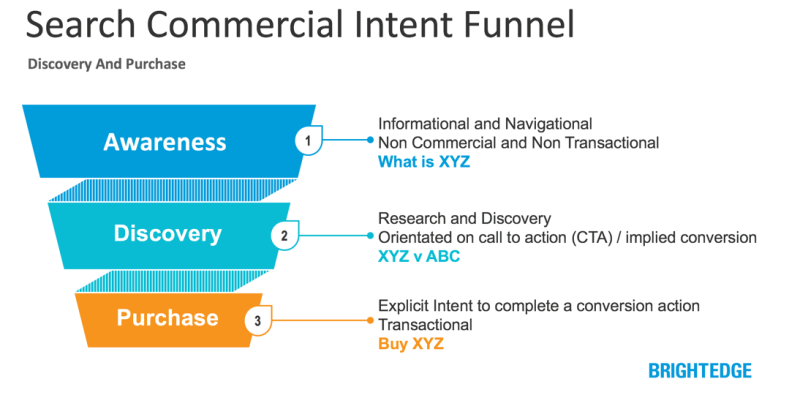
Your customers are constantly connected—make sure that your brand shows up for all the different paths within their journeys to purchase. Consumer decision-making happens on small screens and big screens, on physical keyboards, and with spoken commands. Keyword research is the starting foundational roadmap for the design and execution strategy of content development and building authoritative websites. We would love to hear in the comments below your thoughts on how your company approaches keyword research.

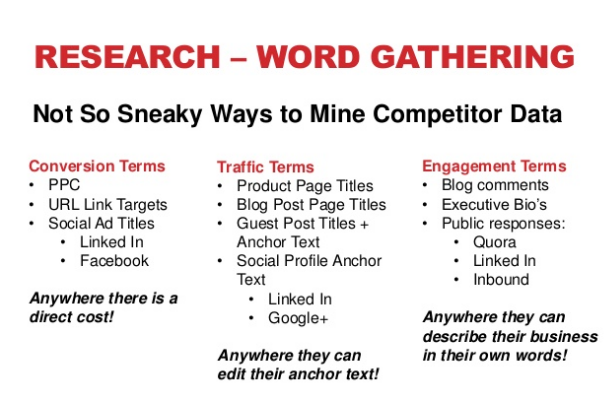
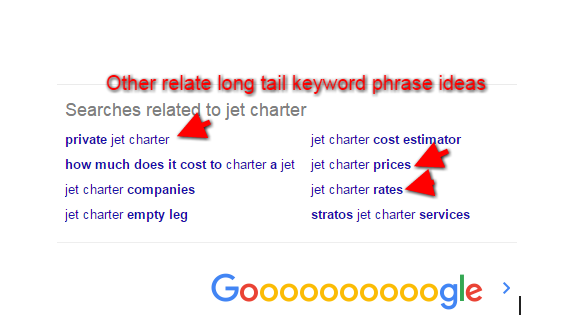
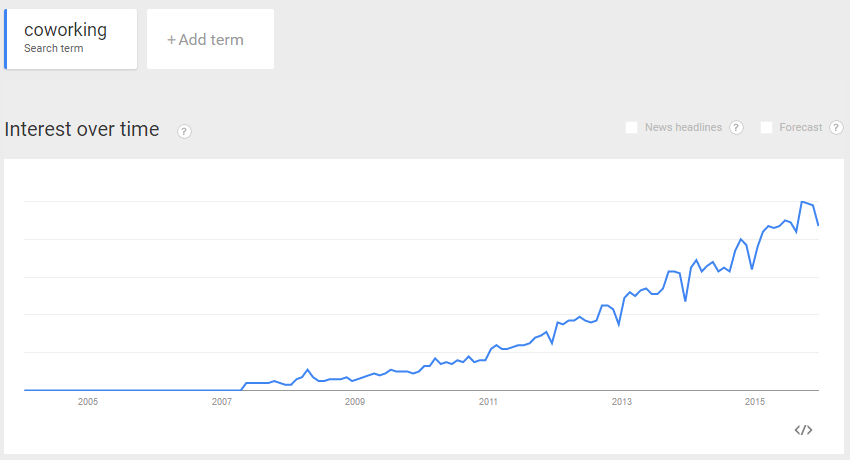

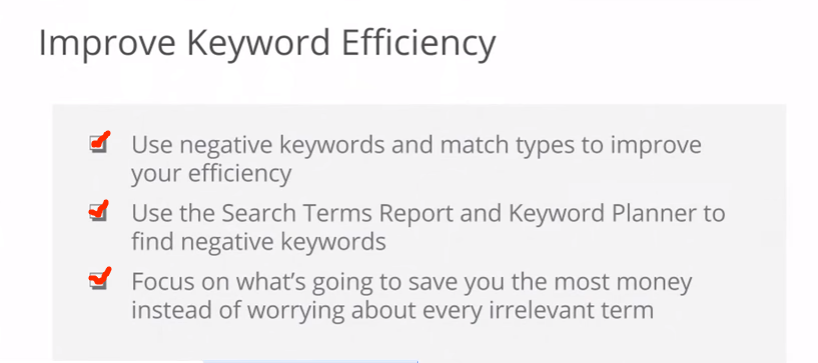
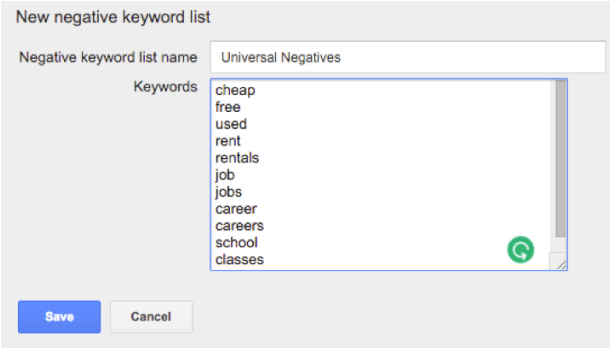

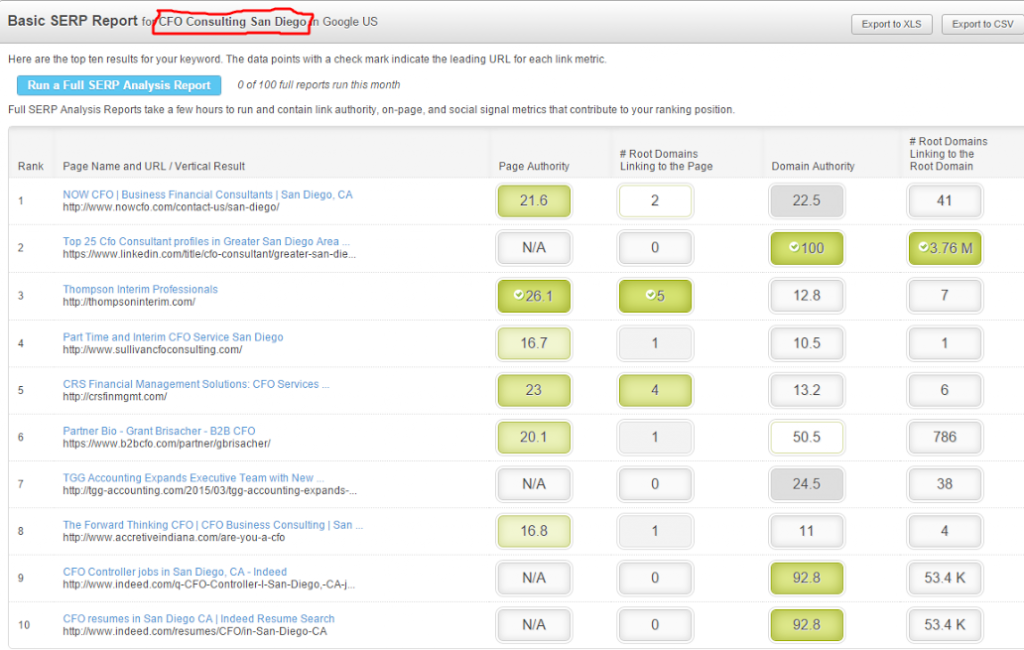
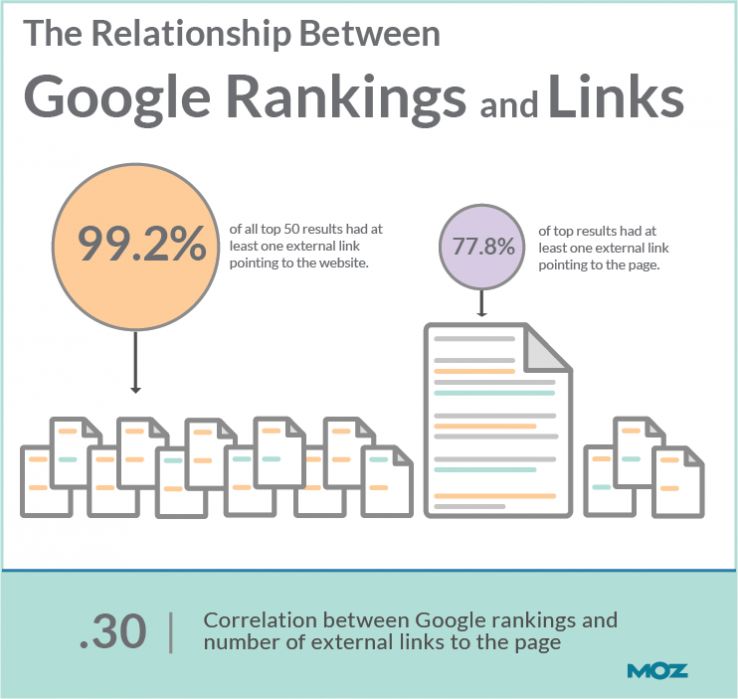



3 Responses
Awesome tips Vania! Thanks for sharing this informative piece. You mentioned semantic keywords, I was wondering , I was wondering do use any LSI tools?